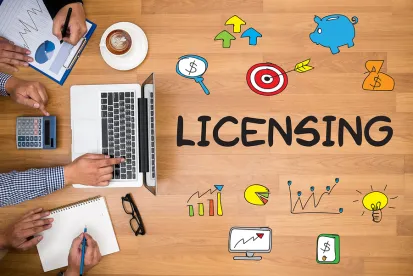Tasked with starting an innovation protection and patent development program at your company but do not know where to begin? This three-part series describes the key components to a patent development program for any company, small or large. This second installment in the series describes subject matter for educating the innovator technical team tasked with developing or evaluating potential patentable innovations within a company.
CONDUCT TECHNICAL TEAM TRAINING
As stated in the first installment of this series, a cornerstone of establishing an innovation protection program includes forming a patent review board. The patent review board can include technical or development team members (e.g., engineers, scientists, design team members, etc.), in-house counsel, outside counsel or other intellectual property advisors, business directors (e.g., officers with product roadmap knowledge, marketing team members, etc.), or any other person who is a part of helping guide the company’s future. While the patent review board should be well versed in the intellectual property field, it is also important to ensure that company innovators also understand the motivation and requirements for a successful patent portfolio, as well as the common pitfalls encountered when developing the portfolio.
Patents' Exclusive Rights
While the patent space can appear complex to those who are not regularly involved with handling patent-related matters, there are some key, yet relatively basic, concepts to relay to a company’s innovators to ensure they understand the benefits and pitfalls related to acquiring patents. For example, the company can teach innovators that a patent provides a grant, by the government, of a limited monopoly to the claimed invention for a limited amount of time. A common misconception by many is that a patent gives the right to practice their invention. However, this is not the case and can lead to confusion. A patent actually gives the right to prevent others from making, using, selling, offering for sale, or importing the protected innovation for the life of the patent. In addition, governments typically grant the property rights for 20 years from the filing of the application, although there can be some variation among countries. In addition, in most countries, there is no requirement that a patent holder actually uses or sells their protected invention while protected by a patent. However, there are some countries, such as India, which do require patented inventions to be used in a commercial setting in order to maintain the patent.
Strategic Importance of Patents
Another concept that innovators should ideally understand includes the strategic importance of patents to the business. One significant benefit of a patent is having a competitive business advantage over competitors. The company can use patents to protect core innovations from copycats and imitators. Protecting a company’s core innovation through patent protection can help relieve the stress of having to be first to market and taking up as much market share as possible prior to competitors reaching the market with imitation products. This can be especially advantageous for smaller companies who may otherwise not be able to compete with large companies for market share.
Cross-Licensing
Another advantage to a company of having a patent portfolio is the ability to access the technology of other companies through cross-licenses, where both companies are able to develop products using the other’s intellectual property. In situations where cross-licensing is done, both companies can benefit from the shared knowledge in order to develop better products that could otherwise be impeded by the other’s patents. In addition to having the opportunity for cross-licensing, the ability to license the patents within the portfolio can be an added revenue stream for a company. Licensing, unlike practicing the invention yourself, can require little work on behalf of a company since the licensee company is performing all the development of a product, while the licensor company collects a licensing fee.
Competitive Positioning
Innovators should also understand that the company can use patents for leverage or deterrence against a competitor. As stated above, a patent gives the right to prevent others from making, using, selling, or offering for sale the claimed invention. A company could potentially patent innovations within a competitor’s space in order to prevent the competitor from practicing an improvement of their business. Additionally, a company can use the threat of potential counterclaims if accused of infringement by others. With all of these benefits combined, patents can be used as both “a sword and a shield” to keep competitors out of a company’s space, but also to defend the company from competitors.
Patent Validity
With the importance of having patents laid out to a company’s key players in the patent space, it is important to explain the requirements of a valid patent. In order to patent an innovation, the innovation itself must be novel, non-obvious, and not an abstract idea. In order to be novel, the innovation must be different from all other innovations that have come before. While this sounds like a high bar to clear, the difference between innovation and all prior art can be a small difference, which improves upon already established technology. The standard of non-obviousness can be complicated but generally requires that the innovation should not have been obvious to a person of ordinary skill in the art at the time of development of the innovation. Additionally, the innovation cannot be an abstract idea, such as an invention that violates the laws of physics (e.g., perpetual motion machine, magic carpet), an idea in itself that isn’t integrated into a practical application, a process performed solely by a human, a mathematical algorithm, or a natural phenomenon. If the innovation clears all of these bars, it may be possible to obtain a patent on the innovation. While not a substitute for guidance by outside counsel, by giving the patent review board and engineers within a company this knowledge, they can perform at least an initial review of these standards in view of their developed innovations, which can facilitate better allocation of company resources to protecting those innovations that are more likely to be eligible for meaningful patent protection.
Prior Art
In addition to reviewing an innovation for the above standards, it is beneficial for a company to determine the scope of prior art within the related field which the invention is within, along with any notable inventors listed on prior art within the field. In some instances, the same prior art reference could be used in the prosecution of many related patent applications on an innovation. It is beneficial to understand these types of references and their pitfalls so that prosecution of the patent applications can proceed smoothly.
Inventorship
Innovators should be educated regarding inventorship. When filing a patent application, it is important to determine who the inventors are. While the Patent Office may consider the company to be the applicant and owner, the patent must list the proper inventors. Potential consequences incorrectly designating inventors can, under certain circumstances, lead to invalidation of the patent, difficulties in enforcement, accusations of fraud or inequitable conduct, or other undesired outcomes. The patent review board should be educated in how to identify contributors involved with developing innovation and proper documentation of their contributions so that inventorship can be properly assessed by legal counsel. Just because an engineer worked on the development of innovation does not necessarily mean they are an inventor. An inventor is someone who conceived (or participated in the conception) of a claimed invention. If one innovator conceived the idea, and then another person or persons implemented the idea based solely on the innovator’s description, the person or persons who implemented the idea would not be an inventor.
Public Disclosure
Innovators should also be informed that public disclosure of the invention prior to filing a patent application can result in a loss of rights to patent the invention. The patent review board and the engineers within a company should be aware of any planned disclosures or product releases related to the innovations. For example, in the U.S., if the innovator or company publically discloses an innovation, this starts a 1-year window to file a patent application within the U.S. in order to protect the idea. If this date lapses, there is no way to recover the patent rights for the innovation. If the company files a patent application after the 1-year date, a patent granted based on that application can be invalidated and there is a risk that a court may find such filing of the application to be a fraud. Additionally, outside of the U.S., many countries do not have any grace period, and the ability to secure patent protection for innovation can be irretrievably surrendered if a public disclosure occurs prior to filing a patent application. This is why it is imperative that the innovators share any planned or already occurred disclosure dates so the company can timely file a patent application to maximize the available scope of protection.
With all of the pieces in place, a patent review board and innovators of a company can move forward with developing innovations, while properly protecting innovations, including ensuring that patent rights are not lost due to failure to comply with the various requirements for patenting. If done correctly, an internal IP protection process can become efficient from a time and cost standpoint, and protect a company’s core technology and innovations for the future.





 />i
/>i
